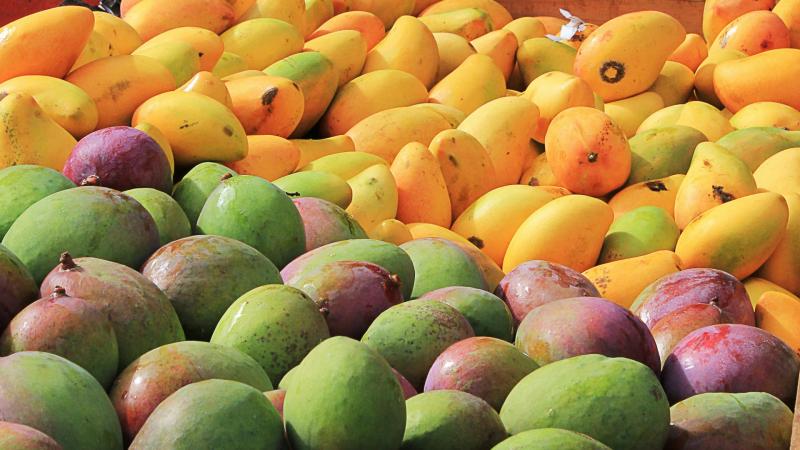
Scientists from the Indian Institute of Technology Kharagpur have developed a model to select the ideal combinations of temperature and pressure conditions to inactivate fruit-degrading enzymes during the processing of mango pulp.
It is hard to miss why the mango is considered the king of all fruits – its delectable taste, delicious aroma, and desirable colour, are all essential qualities that make the global demand for mangoes so high. Processed mango pulp is one such mango-based product which is very popular due to its diverse culinary applications and availability throughout the year. However, in order to make these products last longer, processed mango pulps are often required to be subjected to extensive preservation processes like sterilisation of microbes and inactivation of spoilage-causing enzymes naturally present in the mango. Some of the key spoilage causing enzymes includes pectin methylesterase, which degrades natural pectins—a type of polysaccharides present in cell walls of some fruits, and spoils the texture of the fruit pulp, as well as enzymes like polyphenol oxidase and peroxidase which cause browning of the pulp, and spoil the colour and flavour of the fruit products.
In order to tackle the action of these enzymes, various thermal processing techniques have been used so far. These thermal processing techniques often involve subjecting the mango pulp to temperatures of up to 100˚C for several minutes. Although thermal techniques are very effective in killing microbes and inactivating the spoilage-causing enzymes, they also affect the quality of several other desirable components of the fruit, like its flavour, aroma and natural pigments. Thus, scientists have been exploring several other processing techniques to supplement thermal processing, and the technique of high pressure processing seems especially promising. Although it is known to inactivate the enzymes as well as kill harmful microbes, without adversely affecting the desirable compounds in mango, there needs to be much more research on how this technique actually affects the activity of mango pulp enzymes
Scientists at IIT-Khargpur have now studied the effect of a combination of thermal and pressure based processing techniques on enzyme inactivation in mango pulps. The scientists studied the inactivation kinetics of the enzymes where they measured the change in the rate of enzyme activity with changes in temperature and pressure, and developed a model to measure the efficiency of the thermal and high-pressure processing techniques.
The scientists found several interesting results, most important of which was that the enzyme inactivation induced by a combined pressure-temperature treatment was a very complex phenomenon, and depended on several factors like the enzyme in question, the type of food matrix of the pulp, and the type of sugar present in the pulp. The model developed by them might help fruit processing companies select the ideal pressure-temperature combinations for efficiently decreasing the activity of harmful enzymes in the fruit pulp. The scientists also suggested that similar studies of the effect of pressure-temperature treatments must be conducted in other fruits as well, in order to fully understand the efficacy of these processing methods for different fruits.






